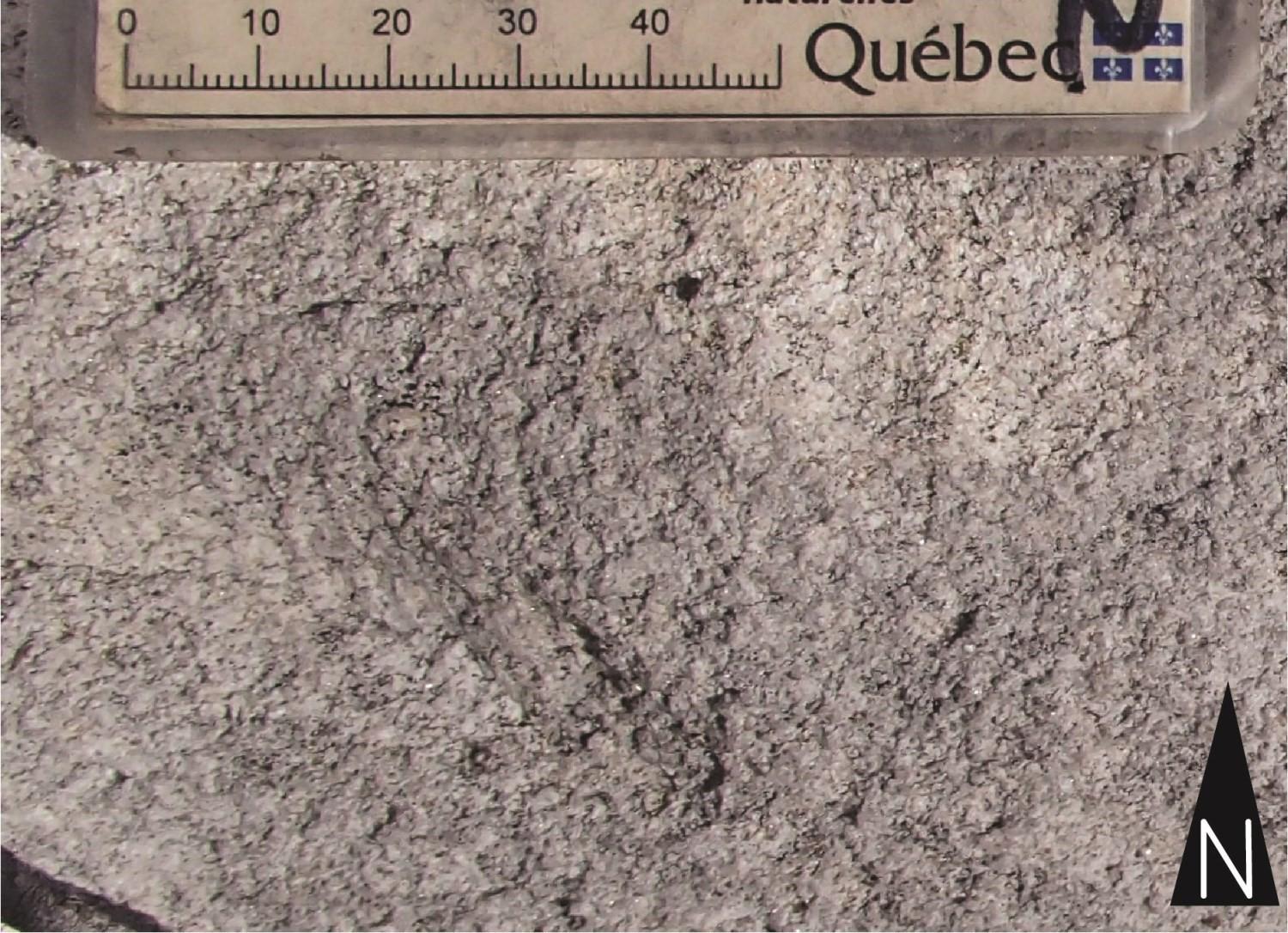
| Author: | Gouthier, 2006 |
| Age: | Precambrian / Archean / Neoarchean |
| Reference section: | |
| Type area: | The Frédéric Intrusion outcrops essentially north of the Goéland Lake (NTS sheet 32F15) and carries over neighboring sheets (32F16, 32K02). Rocks attributed to this unit are also present in the area NW of the Inconnu Lake, on the NE side of the Nottaway Deformation Corridor (NTS sheets 32F16, 32G13, 32K01 and 32J04). |
| Geological province: | Superior Province |
| Geological subdivision: | Opatica Subprovince |
| Lithology: | Diorite, quartz diorite and tonalite |
| Unit type: | Lithodemic |
| Rank: | Lithodeme |
| Status: | Formal |
| Use: | Active |
- None
-
Background
The Frédéric Intrusion corresponds to the « Diorite-Syenite Group » identified by Imbault (1952) in the Olga-Goéland area. This unit also includes a significant portion of the « North Granite » mapped by Imbault (1954) in the Maicasagi area. It is described with its current boundaries as the « AOPA3 » unit by Goutier (2006) in the Goéland Lake area. It was designated « Frédéric Intrusion » by Leclerc and Caron-Côté (2017).
Description
The Frédéric Intrusion is essentially made up of diorites and quartz diorites. Tonalites, which represent up to 40% of the outcrop surface, are a subordinate facies. Diorites have a greyish, whitish or pinkish patina and a pinkish gray or greenish yellow fresh exposure. Structure is equigranular or heteroblastic with a variable degree of deformation, from slightly deformed to well foliated. Some layers of gneiss are also present. These medium-grained rocks are composed of plagioclase, variable quartz, and hornblende or biotite. Plagioclase crystals are usually zoned. Accessory minerals include epidote, microcline, apatite and magnetite. Hematitization and saussuritization are quite common in these rocks. The presence of gneiss xenoliths in diorite is reported in one occurrence.
Thickness and distribution
Rocks of the Frédéric Intrusion are cut and shifted by dextral displacement of the Nottaway Deformation Corridor. The portion of the unit located SW of this structure, in the Goéland Lake area (NTS sheet 32K01, 32F15, 32F16) covers an area of approximately 350 km2, while the NE part, NW of Inconnu Lake (NTS sheets 32F16, 32G13, 32J04, 32K01), covers an area of 170 km2.
Dating
None.
Stratigraphic Relationship(s)
Crosscutting relationships and nature of contacts between the different phases of the Frédéric Intrusion are variable. Contacts can be sharp or diffuse and reflect the presence of multiple centimetric to decametric injections. These are not migmatites. In one place, diorite contains gneiss xenoliths. To the west of Maicasagi Lake (NTS sheet 32F15), gneissic diorites of the Chensagi Suite host the Frédéric Intrusion. At the boundary between NTS sheets 32F15 and 32F16, rocks of the Frédéric are cut by the Maicasagi Pluton (Amcg). North of Goéland Lake, the contact between rocks of the Frédéric Intrusion (Opatica Subprovince) and volcanic rocks of the Rivière Bell and Dussieux formations (Abitibi Subprovince) is interpreted as a shear zone dipping to the north (Goutier, 2006). The only outcrops in the area, however, show an intrusive contact between diorite and mafic volcanics.
Paleontology
Does not apply.


